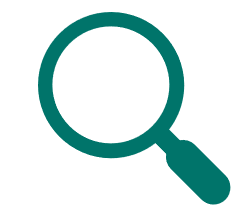Search
News categories
MPM 2023: Media Pluralism Monitor published
This year's overall results show a continuity with previous mappings despite an increase of the risk associated with market plurality

The Media Pluralism Monitor (MPM) is a project co-funded by the European Union and developed since 2014 by the Centre for Media Pluralism and Media Freedom. The project aims at regularly assessing the risks to media pluralism in Europe, taking into account legal, political and economic variables. As in previous versions, the MPM 2023 also includes an additional focus on media pluralism in the digital environment.
The MPM is based on 20 indicators covering four areas*:
- Fundamental protection: Protection of freedom of expression / Protection of right to information / Journalistic profession, standards and protection / Independent and effective media authorities / Universal reach of media
In a nutshell: The situation in three of the five risk indicators remains unchanged. A slight deterioration of the indicator concerning independent and effective media NRAs can be noted (see focus below) ; significant improvement (from 32% to 26%) is observed with regard to the reach of traditional media and access to the Internet (from 32% to 26%) due to increased broadband coverage and the Internet access during and following Covid-19.
- Market plurality: Transparency of media ownership / Media concentration / Media viability
In a nutshell: the risk associated with the market plurality area increases with an average risk level of 69% (high-risk range), owing to media ownership concentration of media providers and the dominance of global platforms acting as digital intermediaries in the distribution of media content. Media pluralism is deemed to be at high risk in CY, GR, HR, MT, SI and at very high risk in BG, HU, PL, RO.
- Political independence: Political independence of media organisations and public service media / State support to the media sector.
In a nutshell: This risk area continues to show a medium risk with half of the countries in the medium risk range. The highest level of risk is recorded in relation to the indicator on Editorial autonomy.
- Social inclusiveness: Access to media for local and regional communities and for community media / Access to media for women / Media literacy / Hate speech
In a nutshell: This risk area remains stable in the medium risk band with gender equality in the media remaining the most problematic indicator. There was a methodological change for assessing the indicator of media literacy.

Focal point: Independence & effectiveness of media NRAs according to MPM
- 8 countries scored a medium risk (AL, BG, GR, HR, PL, RS, SI, TR)
- 1 country scored high risk (HU)
- 23 countries were within the low-risk range
This is a minor deterioration compared with MPM 2022 (from 24% to 25% risk score).
Sensitive issues revolve around:
- the appointment procedures
- the effective independence of the media authority.
MPM Report Recommendations:
- establish clear rules for appointment procedures, appropriate funding and accountability mechanisms to reinforce the independence of NRAs
- establish data exchange procedures and mutual consultation mechanisms between media regulators and authorities from adjacent sectors, such as data protection authorities to promote and enhance the cooperation between regulators.
* The complete list of indicators covered is listed in table 2a. of the report (p. 11).
General information:
Year covered: 2022
Geographical scope: EU member States, Albania, Montenegro, North Macedonia, Serbia and Türkiye. A novelty this year is a pilot study on Ukraine and Moldova.
-
Summary
-
Interactive data map (per country, area, indicators and sub-indicators)
-
MPM 2023 Full report: Monitoring media pluralism in the digital era: application of the media pluralism monitor in the European Union, Albania, Montenegro, the Republic of North Macedonia, Serbia and Turkey in the year 2022: Centre for Media Pluralism and Media Freedom, Konrad Bleyer-Simon, Elda Brogi, Roberta Carlini, Danielle Da Costa Leite Borges, Iva Nenadić, Marie Palmer, Pier Luigi Parcu, Matteo Trevisan, Sofia Verza, Mária Žuffová
Source: CMPF
 The Media Pluralism Monitor is an important source of information for the European Commission’s recently published Rule of Law report for 2023 - together with Reporters Without Borders’ World Press Freedom Index and the Council of Europe’s Platform to promote the protection of journalism and safety of journalists.
The Media Pluralism Monitor is an important source of information for the European Commission’s recently published Rule of Law report for 2023 - together with Reporters Without Borders’ World Press Freedom Index and the Council of Europe’s Platform to promote the protection of journalism and safety of journalists.
Countries
See also
- Media Pluralism Monitor 2020: measuring the impact of the digital environment posted on 28 July, 2020
- Media Pluralism Monitor 2022: confirmation of the trends observed in recent years posted on 24 August, 2022
- Independent report shines new light on media plurality in the UK posted on 01 December, 2023